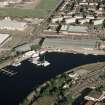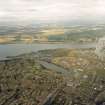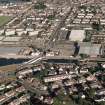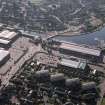Pricing Change
New pricing for orders of material from this site will come into place shortly. Charges for supply of digital images, digitisation on demand, prints and licensing will be altered.
Upcoming Maintenance
Please be advised that this website will undergo scheduled maintenance on the following dates:
Thursday, 9 January: 11:00 AM - 3:00 PM
Thursday, 23 January: 11:00 AM - 3:00 PM
Thursday, 30 January: 11:00 AM - 3:00 PM
During these times, some functionality such as image purchasing may be temporarily unavailable. We apologise for any inconvenience this may cause.
Inverness, United States Naval Base 18
Submarine Mining Station (First World War)
Site Name Inverness, United States Naval Base 18
Classification Submarine Mining Station (First World War)
Alternative Name(s) Glen Albyn Distillery; Carse
Canmore ID 332060
Site Number NH64NE 827
NGR NH 65467 45916
NGR Description From NH 65414 45796 to NH 65532 46550
Datum OSGB36 - NGR
Permalink http://canmore.org.uk/site/332060
- Council Highland
- Parish Inverness And Bona
- Former Region Highland
- Former District Inverness
- Former County Inverness-shire
In 1917 it was decided that the United States and Britain would jointly create a barrier of mines between Scotland and Norway to restrict the movement into the Atlantic of German submarines.
The United States Navy established two naval bases, at Inverness (Naval Base 18) and Invergordon (Naval Base 17, see NH66NE 23), where mines, shipped in pieces from the United States to the west coast of Scotland, were assembled, by US naval personnel, prior to being loaded onto American mine-laying ships. Two bases had to be established because Inverness Harbour was not large enough to accommodate enough mine-laying ships at once.
The mines were landed from the United States at Kyle of Lochalsh (from where up to 2,000 mines a week were moved by train to Invergordon) and Corpach (from where up to 1,500 mines a week were shipped through the Caledonian Canal to Inverness).
Using production line methods copied from the car industry, a total of up 1,340 mines a day was assembled at the two bases. The bases came into being in February 1918, the first mines arrived at Corpach on 5 April, and the first mines were assembled on 29 May. By the Armistice on 11 November the mine barrage was complete from Norway to within 10 miles of Orkney. 56,760 US mines had been laid in just over 5 months, and 16,300 British ones.
The Naval Base at Inverness was established in the premises of Glen Albyn distillery, strategically placed at the end of the Caledonian Canal and adjacent to Inverness Harbour. Existing buildings, including the manager's house, were used for accommodation and the base HQ, and large structures were built for the assembly and storage of mines. New railway tracks were laid to allow the rapid movement of material across the site.
The site seems to have been cleared fairly quickly after the war.
Information from HS/RCAHMS World War One Audit Project (GJB) 8 August 2013.
Project (March 2013 - September 2013)
A project to characterise the quantity and quality of the Scottish resource of known surviving remains of the First World War. Carried out in partnership between Historic Scotland and RCAHMS.
















